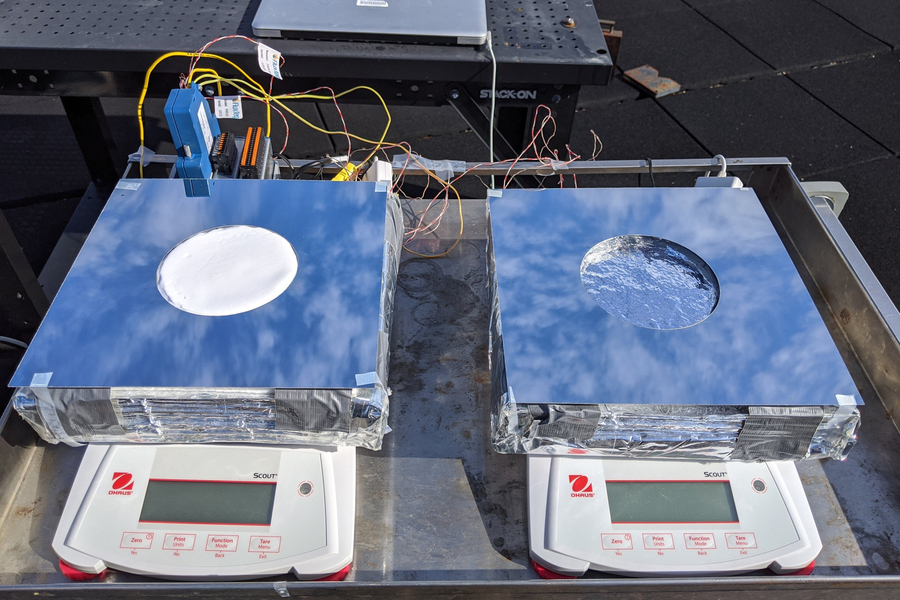Passive cooling is the principle of using certain design choices to help reduce heat gain (or promote heat loss) from a building.
In its purest form, the strategy or design choice must be “automatic” and not require any energy input after installation.
While it might sound like science fiction, passive cooling is a very ancient and well-known practice.
However, rising energy costs and awareness of the potential environmental cost of excessive energy consumption from non-renewable power sources have refocused minds on ways to cool for free.
Stay ahead of your peers in technology and engineering - The Blueprint
Let’s find out how.
What is passive cooling?

While it sounds fancy and highly technological, passive cooling is a rebranding of an ancient practice used in many of the hottest climates on Earth.
However, modern passive cooling research is far more sophisticated and scientific. That is, the objective is — more or less — essentially the same as our ancestors (albeit with more emphasis on advanced materials and understanding of thermodynamics).
Many design features of classical or traditional architecture have incorporated passive cooling techniques through trial and error.
Examples include the humble veranda, awning, or whitewashing (limewashing) commonly seen in hot climates like the Mediterranean or countries like India.
The veranda, for example, is an Anglicized version of the Hindi word “??????”(“verandah”).
In case you are unaware, a veranda is a roofed, open-air porch or hallway usually attached to the outside of the building. Its purpose is to provide shade from the elements, which indirectly helps keep spaces “blocked” by the structure cooler in the summer.
It also offers shelter from the elements, enabling home dwellers to sit outside.
The origin of the structure is lost to time, but early references to similar structures are found in Vastu Shastra texts.
In Europe, however, it first appeared as the structure we are familiar with today around the 1850s.
Awnings and whitewashing are timeless passive cooling strategies
As for awnings or whitewashing (limewashing), these are nearly timeless passive cooling strategies commonly seen in ancient domestic and public structures worldwide.
For example, ancient Hittite buildings in modern-day Turkey dating back to the Bronze Age commonly used this technique.

The purpose is very simple. The white finish helps reflect sunlight from the building, helping to keep it nice and cool in summer. Given its simplicity, the technique is likely much, much older.
Awnings are also ancient, with some of the most famous examples including the velarium of the Roman Colosseum (Flavian Amphitheater). Like limewashing, this practice is incredibly ancient.
However, significant progress has been made in providing passive cooling strategies in modern buildings and cities.
These include techniques like stack ventilation or maximizing cross-ventilation. These techniques can become quite complex, but they are a core principle of many modern architectural designs.
After all, why spend energy when you can get some cooling benefits for free? To this end, let’s look at some of the most interesting “high-tech” examples.
1. Using aerogel to cool for free

One of the most interesting high-tech passive cooling strategies developed recently is using an aerogel composite to help cool for free. Developed by scientists at the Massachusetts Institute of Technology (MIT) in 2022, the solution is elegant and efficient.
The MIT solution, intended for use on roofs, consists of three layers of material that cool water and let heat pass through.
The top layer comprises aerogel, a sponge-like structure made from polyethylene with air trapped in cavities.
Beneath the aerogel layer lies a hydrogel layer, another sponge-like material filled with water cavities.
Lastly, a mirror-like layer reflects all incoming light to the other device components. This ensures that the components heat up and not the contents of the storage box.
When water in the hydrogel is heated, it turns into water vapor and moves upward, resulting in evaporative cooling. This process carries some of the heat with the vapor.
Additionally, the vapor can pass through the aerogel, allowing infrared radiation (radiative cooling) to transfer heat from the device directly through the air and into space.
Pretty nifty.
2. Phase-changing inks could be the future of building paint

Another interesting development in high-tech passive cooling solutions is a special phase-changing ink developed by the University of Melbourne.
With these special inks, the researchers explain, nanotechnology can help regulate the temperature of buildings all year round.
To this end, they can help keep buildings cool in summer and warm in the winter. During cooler months, the inks can allow more sunlight to pass through during the day and provide better insulation to retain warmth at night.
During the summer, the inks can create a barrier that blocks heat radiation from the Sun and the surrounding environment.
The researchers point out that this is achieved by their ability to modify vanadium oxide (VO2), one of the primary components of phase change materials.
The inks can be applied to building facades as laminated composite sprayed applications or paints. If desired, they could even be included in building materials.
3. This lignin-free wood can help cool buildings
Yet another interesting passive cooling solution is lignin-free wood. Researchers at the University of Maryland and the University of Colorado have developed it, harnessing one of nature’s wonder materials to make it even better.
They found that removing lignin (the part of the wood that gives it its color and strength) could produce a very pale substance composed mainly of cellulose nanofibers. When compressed, the “wood” could be made to restore its strength and keep other useful properties for passive cooling.
They also made the material water-repellent by adding a super hydrophobic compound that helps protect the wood. The end product is a bright white building material that can be used for roofs to deflect heat away from the building’s interior.
In fact, the researchers found that if buildings had their sidings or roofs replaced with wood, it could save around 20 percent of active cooling energy costs!
“The processed wood uses the cold universe as a heat sink and releases thermal energy into it via atmospheric transparency window. It is a sustainable material for sustainable energy to combat global warming,” explained Dr. Li, one of the researchers behind the passive cooling wood.
4. This paint uses space as a heat sink

One of the most intriguing passive cooling solutions developed recently is a special paint invented by SRI. This paint, SRI explains, contains special pigments that can help cool a surface (or a building) without needing any energy.
The paint does this in two ways. The first enables the paint to reflect 96 percent of direct sunlight away from a surface. This means the surface that the paint is applied to retains or absorbs very little of the Sun’s heat.
The second, and far more interesting, is the inclusion of special materials that can effectively use space as a heat sink. This might sound wacky, but some of the paint’s components can radiate infrared wavelengths into the atmospheric transparent window.
This specific band of wavelengths can easily pass through the Earth’s atmosphere and effectively exploit the temperature difference between a surface and outer space.
“That is the real magic of science,” said Anish Thukral (one of the researchers behind the paint. “We’re using outer space as a direct heat sink, and space is always available and extremely cold. So, it’s a clean and sustainable solution for cooling,” he added.
5. Photonic crystals could be the key to passive cooling

Yet another interesting approach is photonic crystals. While they may sound like something out of Star Trek, this is a term for special crystals that can reflect sunlight and emit infrared radiation simultaneously.
To this end, they work similarly to the SRI paint described above. They are also found in nature, with opals and certain compounds in butterfly wings effectively acting like natural examples of photonic crystals.
These crystals are engineered at the nanoscale to manipulate light and heat, enabling passive cooling even under direct sunlight. They can be applied to buildings, vehicles, and even clothing to provide cooling without energy consumption.
Photonic crystals could help achieve passive cooling in buildings by being incorporated into various building materials, including windows, roofs, and walls, to improve their cooling abilities.
For example, photonic crystal coatings on windows could permit visible light to enter while blocking UV and infrared radiation, reducing indoor heating without affecting natural lighting. Similarly, roofing materials embedded with photonic crystals can reflect a significant amount of sunlight and radiate heat more efficiently.
And that is your lot for today.
Passive cooling solutions like those discussed above have the potential to dramatically reduce electrical consumption in buildings to maintain the internal temperature. If brought to scale and adopted in the built environment, these solutions could be a real game-changer for future sustainable buildings.




 BlocksInform
BlocksInform










